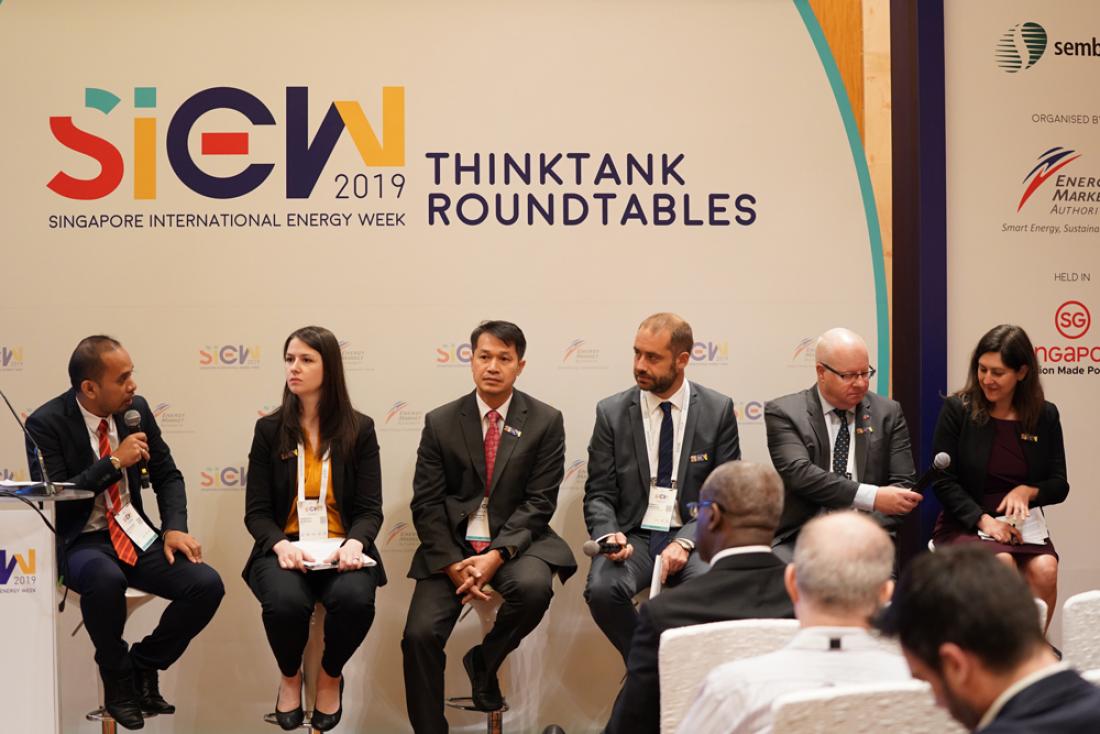Asia Research News brings you this content provided by our partner. If you attended SIEW we hope you got a copy of our latest Asia Research News magazine.
Dr Twarath Sutabutr, Inspector-General, Ministry of Energy, Thailand, set the stage that a Smart City must be one which is liveable and uses smart technology to enhance quality of life and to incubate new businesses and start-ups. Digital platform (e.g. internet) and physical infrastructures (e.g. utilities, healthcare, safety) are essential enablers to build these cities. A total of 26 ASEAN cities were nominated to be part of the ASCN.
As the project moved from Planning to Implementation, Dr. Sutabutr shared the four dimensions to a successful Smart City Implementation: (a) Local Government taking a lead, be adaptable to changes, and creating participatory platforms to catalyse innovation; (b) Designated areas selected for Sandbox projects, where rules are relaxed and data can be made available to harness innovation; (c) Digital Capabilities; and (d) Funding and Partnership, to develop an eco-system, build alliances and facilitate technology transfer.
Mr. Naoki Toda, Chief Economist, Tokyo Electric Power Company (TEPCO) Research Institute, shared that five major trends, named the 5-Ds – Decarbonisation, Decentralisation, Digitalisation, Deregulation, Depopulation – will change the Japanese energy system. While the de-population trend was unique to Japan, Mr. Toda cited that ASEAN would likely face similar challenges with de-population in 2030s. Mr. Toda also highlighted that the Utility 3.0 model would be fuelled by technology shift from centralised to decentralised model (e.g. renewables, micro-grids), with integration with other business, including other network infrastructure, and this would support the Society 5.0 Vision of Future Society, where the super smart society would be driven by data-driven decision making. TEPCO had been leveraging on these trends by integrating and working with a cartographic company and an internet commerce company to use transmission towers and substations as landmarks, and use substations as charging stations for commercial drone operations.
Mr. Elangovan Karuppiah, CEO of Regional Solutions and Services, Siemens Smart Infrastructure, Middle-East & Asia Pacific Region and Head of Smart Infrastructure for ASEAN, highlighted that the key trends to drive smart cities growth were urbanisation and sustainability, while decarbonisation and decentralisation were key energy trends to support Smart Cities. Ms. Valérie Anne Lencznar, Vice Chair, Global Smart Grid Federation (GSGF), cited that the challenges of a Smart city included silo organisation of city services, and that inefficient management of these energy projects. Mr. Karuppiah believed that the future of cities depended on smart solutions, and smart cities would be recognised by the level of integration through the use of digital technologies. The successful and smooth integration of infrastructure, healthcare, energy (e.g. distributed energy systems, energy storage), mobility (e.g. charging infrastructure) solutions, supplemented by governance, would contribute to higher productivity and efficiency of the city. These systems could be integrated through digitalisation.
Mr. Karuppiah reminded city planners and policy makers to think about people who would be living in these cities when they develop these Smart Cities.
H.E. Morten Høglund, Ambassador to ASEAN, Norwegian Embassy Jakarta, shared Oslo’s journey to be the Electric Vehicle (EV) Capital of the World. While Norway introduced EV policy incentives (e.g. zero taxes, free parking) in the 1990s, EV sales took off with technology development (e.g. longer range, wider variety of cars) only in the 2010s. Both state and city incentives made EVs cheap to buy and use. Oslo has also seen a rising market share of EVs (i.e. more than 20% in 2018), and Norway has set a target for all private cars sold in Norway to have no emissions in 2025 (i.e. no sales of diesel and gasoline car from 2025). Oslo will also be introducing new solutions such as building more fast chargers, have flexible charging and pre-booking for charging, and making sure EV car owners can charge at home.
Thomas Capral Henriksen, Head of Energy Cooperation, Embassy of Denmark in Indonesia, highlighted that Demark has set a target to produce 70% of their 1990 emissions in 2030, while its capital, Copenhagen, has set a target to be carbon neutral in 2025 through its The Copenhagen 2025 Climate Plan. The Climate Plan included setting targets in the areas of
Energy consumption (e.g. 20% reduction in heat consumption); Energy Production (e.g. district heating to be carbon neutral with power produced by wind, solar and biomass); Mobility (e.g. Public transport to be carbon neutral, more than 70% of all trips to be by foot, bike or public transport); and City Administration (e.g. reduce energy consumption of buildings by 40%).
Mr. Henriksen shared that challenges to achieving the targets set included converting private vehicles to new types of fuels and reducing energy consumption in city.
During the panel discussion, the moderator Beni Suryadi, Manager, Policy Research and Analytics, ACE, asked about ASEAN’s plans to develop more Smart Cities. Dr Sutabutr suggested for ASEAN to consider pairing up ASEAN cities with other Smart Cities so as to help city planners in their planning and development work, to mobilise investment and technology transfer, and to build capacity and capability.
Ms. Katy Clarke, Senior Energy Advisor, U.S. Department of State, shared that US had hosted officials from ASEAN cities on Smart Cities development in 2018. While Dr. Sutabutr cautioned that the challenge would be contextualising the learnings to the local environment, he was confident that creating partnerships would be important for ASEAN to move forward on this.
Mr. Henriksen echoed Dr. Sutabutr’s views that cooperation would be essential to develop more Smart Cities in ASEAN.
About Asia Research News Partnerships: Asia Research News partners with R&D conferences and events all over the world, helping raise awareness about the events and providing complimentary copies of Asia Research News magazine to delegates. Learn more about media partnerships or participating in the magazine.



